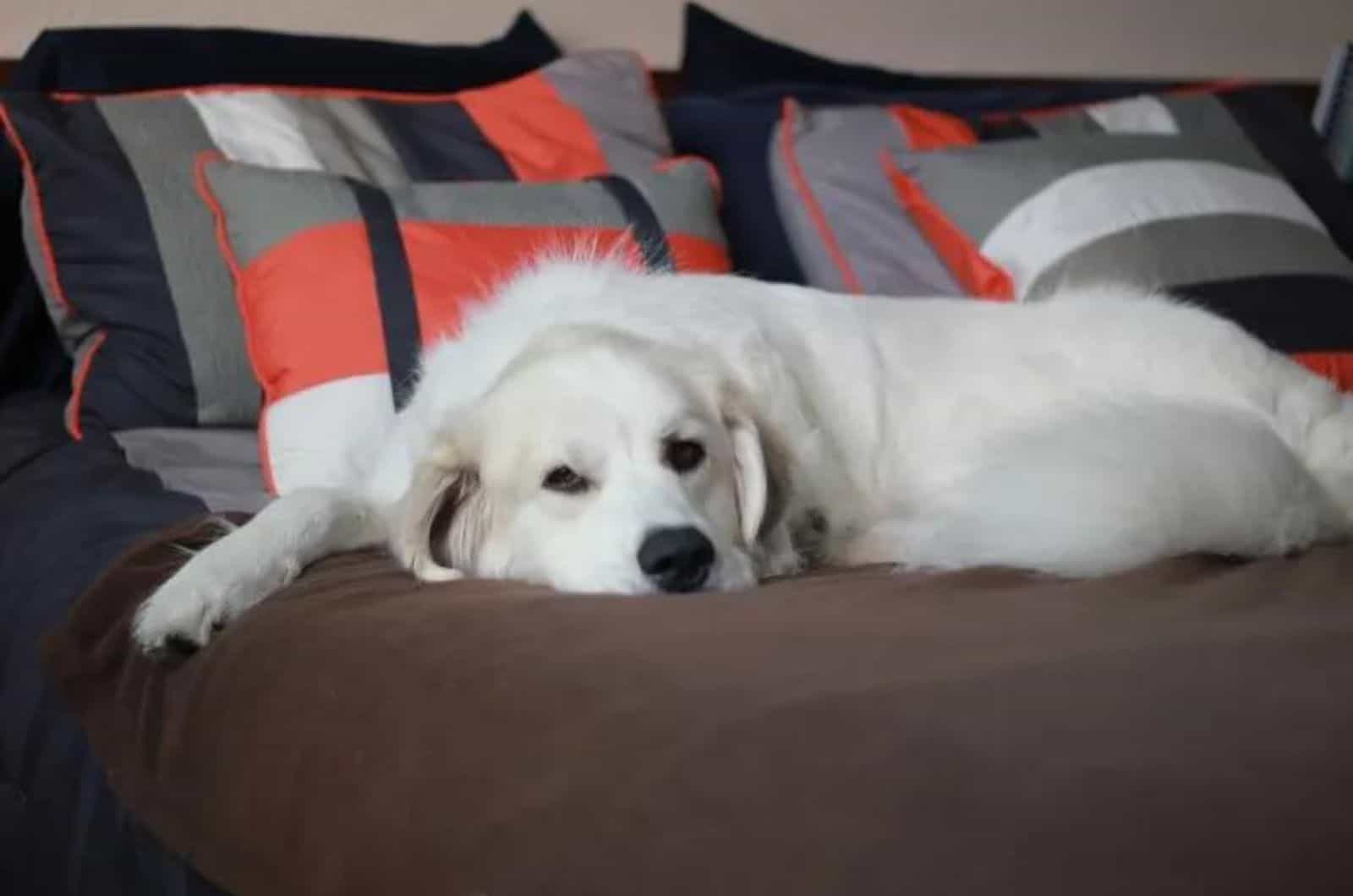The Great Pyrenees are not your typical family pets, which is why they can’t be trained or treated the same way. Therefore, the Great Pyrenees training methods are based on much more than simple commands they should acquire.
A German Shepherd will likely do everything its owner tells it to do, but it’s difficult to expect the same from a pup, such as the Pyr.
This pup will surely test your limits whenever it gets a chance, but it’ll also make sure that you never get bored!
Keep reading this article if you want to know more about the essential tips and tricks on how to train these wonderful, but strong-willed large canines.
Great Pyrenees Training Tips
1. Use Training As Bonding Time
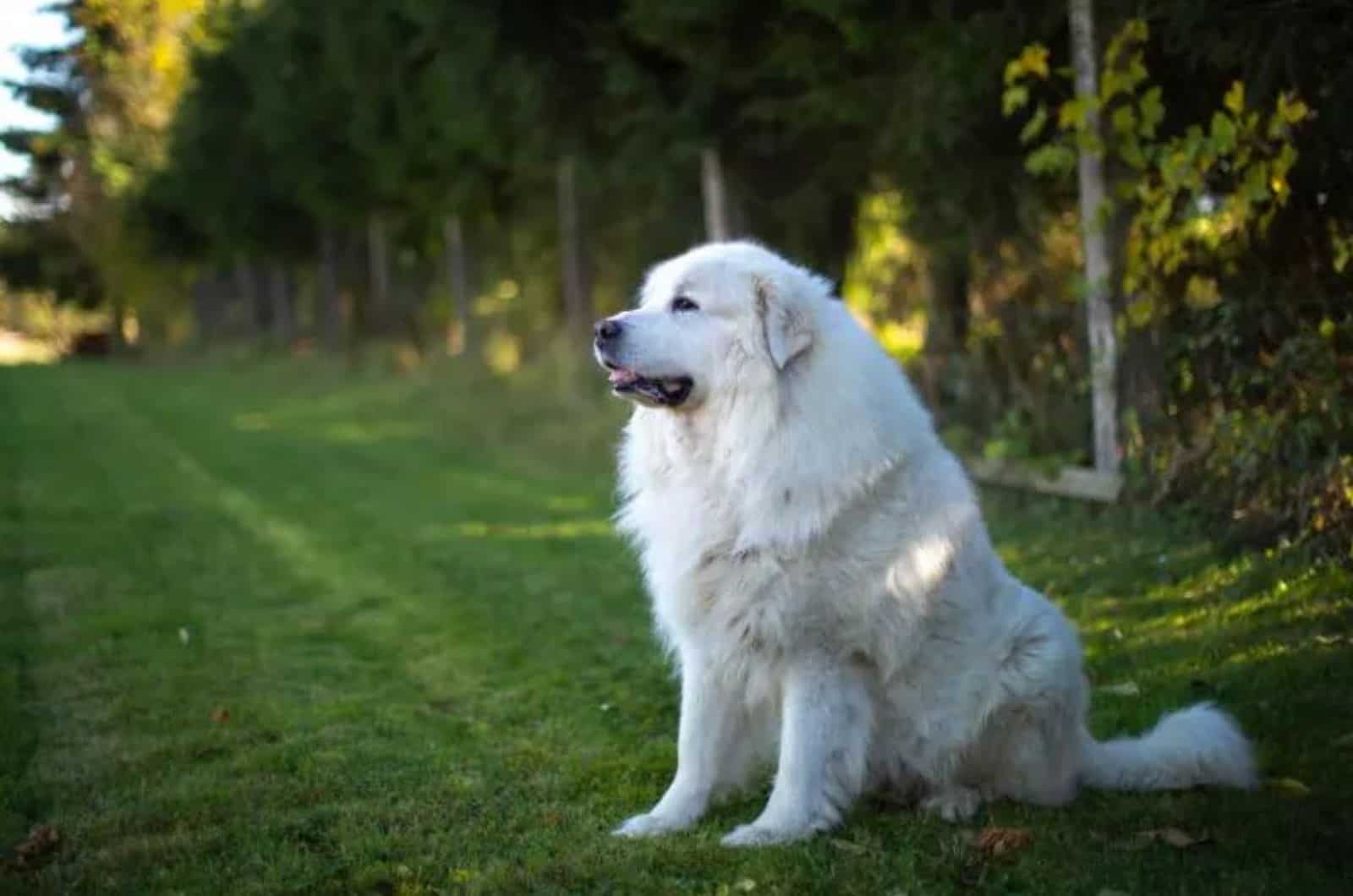
Trust is the foundation of a good relationship with your pet, and a crucial starting point for any type of training.
The Great Pyrenees that have the strongest relationships with their owners are also the ones that are entirely obedient and fiercely loyal to their humans.
Creating a bond with a Pyr doesn’t seem to be an easy task since these pups are used to doing things on their own. However, once they feel comfortable and safe enough around their humans, Great Pyrs turn into obedient pets.
When you and your dog have bonded, this does not imply that the dog will be constantly following you around or won’t leave your side – the bond between you will help you understand your dog and its needs.
The best way to spend time with your pup between training sessions is to go for walks or generally spend more time together.
You can take the Pyr to the dog park, which is a great way to bond with your pup and learn what it likes, but it’s also a good way for them to socialize with other dogs from early puppyhood.
Make sure your dog is aware of your positive emotions. Try to praise it whenever it does something well, especially during training. A kind word and a treat will be their main motivators to do what they’re told.
2. Stay Positive
This is a canine breed that might look intimidating because of its appearance and large size, but deep inside, they’re incredibly emotional and quite sensitive.
During the training, it’s essential for the dog owner to develop healthy communication with the Great Pyrenees, which will be its main motivation to learn and adjust its behavior.
Your connection with your pet will suffer if you engage in physical aggression, yelling, or any other behavior that might harm the canine in any way.
The best way to motivate your pup is to use positive reinforcement, which will turn dog training into a pleasurable activity.
It might be anything from a toy to food or loving attention from their owners. Reward any good behavior in the quickest and most consistent manner possible.
The only way to engage your Pyrenees in any activity, including obedience classes, puppy and potty training, and other training programs, is by having a positive attitude towards it.
3. Train Everywhere You Can
Training in the same environment every day can become monotonous for both you and your pup, and that’s a big no-no in the world of the Great Pyrenees.
To prevent boredom, you can switch places and times for training to make it more dynamic and fun. Practice out in the park, on the street, or in a pet-friendly store.
When you expose your canine to real-life environments at a young age, it’ll cooperate in a better way and adopt new behaviors more easily.
Also, Pyrs are not very friendly towards strangers, but if you spend a lot of time outside the house, they’ll eventually adapt to other humans and animals around them.
4. The Right Equipment Does Wonders
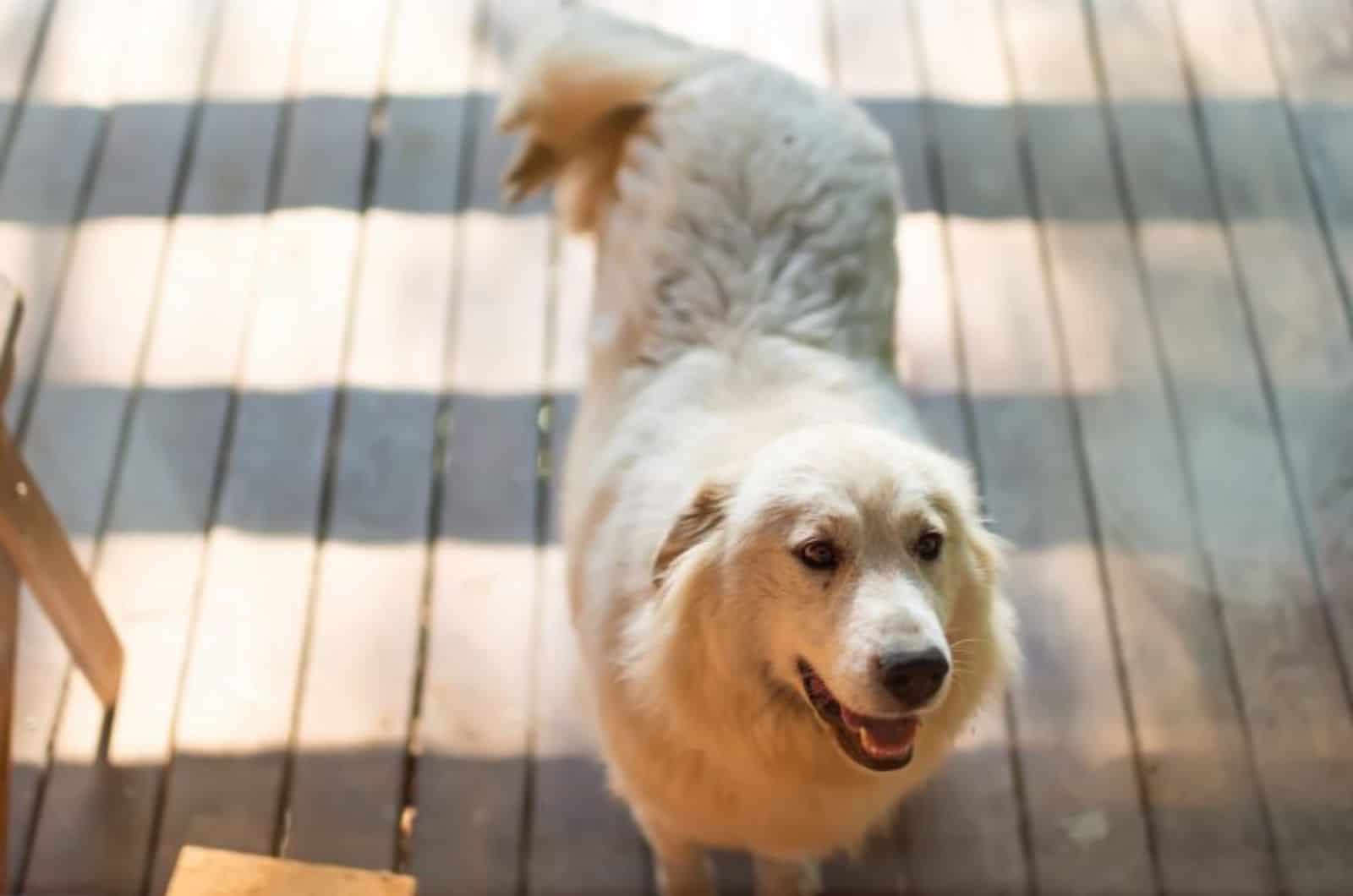
Building a relationship that is formed on love and mutual respect is one of the essential things that will turn Great Pyrenees training into a success.
However, new owners of Pyrs are often unaware of their pet’s strength, especially during walks, where you might end up being dragged down the street if you don’t use the right tools.
The best way to keep you and your Pyr safe and comfortable is to use harnesses for large canines like the Great Pyrenees, the Cane Corso, the Bernese Mountain Dog, the Afghan Hound, etc.
RELATED: Bernese Mountain Dog Cost: Puppy Prices, Care, And Expenses
Toys are an equally important part of the training and one of the most underrated ones, I’d say. They can be used as tools for training because they’ll keep your pup entertained, and will stimulate it to continue practicing.
5. Change Training Techniques
Puppy training, house training, crate training, and other types of training can become quite monotonous, which will result in your pup becoming bored and uninterested in practicing and listening to your commands.
The Great Pyrenees is a livestock guardian dog (LGD), just like the Anatolian Shepherd, the Maremma Sheepdog, the Kangal Shepherd, and other breeds.Adventure is in the DNA of these canines; they’re used to hiking, defending cattle from predators, and exploring nature instead of repeating simple commands like sit and roll over numerous times.
Therefore, the best way to have successful Great Pyrenees training is to keep it as short and as interesting as possible.
Having several five-minute training sessions with your new puppy during the day will be more beneficial than begging your pup for half an hour to complete one exercise.
Choosing The Right Training Methods
Most dog owners don’t realize that not all dog breeds respond equally, especially during training.
Different breeds have different temperaments. Therefore, it’s impossible to use the same training techniques on non-aggressive canines such as Samoyeds, Golden Retrievers, and French Bullies, and those that might show signs of hostility, like Cane Corsos, Dachshunds, Chihuahuas, Great Pyrs, and other breeds.
For example, Great Pyrs require obedience and socialization training through positive reinforcement more than Frenchies or Golden Retrievers do, especially if you’re trying to train an older dog, not a puppy.
Golden Retrievers and similar breeds will go through basic training programs without many complications, but breeds such as Pyrs will require a lot more motivation and work.
If you’re not sure that you can handle the training on your own, even though you’ve tried almost every method from training books, it might be time to call a professional dog trainer for help.
6. Find Humor In It
Your behavior and emotional state will impact the success of any training, no matter which method you try to use.
Training a Great Pyrenees, especially a young adult dog (canine adolescent), will create a rollercoaster of emotions in you.
However, instead of expressing any negative emotion, you should try to have more understanding and realize that this is just a young puppy that is learning how to behave inside and outside the house.
It can be challenging and it can be exhausting, but at the end of the day, if you laugh instead of cry because your pup doesn’t respond to the basic rules of house training, it’ll be easier for both of you.
Also, if you find humor in every failure, the success will come earlier, as the Pyr won’t feel additional pressure coming from any negative emotions you may have.
7. Remain Strong
Your confidence plays a crucial role in the development of the relationship between you and your Great Pyr. Being sure of yourself helps you become an authoritative dog owner who’ll be respected even by the most stubborn canine breeds, such as the Great Pyrenees.
Keep in mind that Great Pyrs are self-reliant canines that were developed to do their duties even in the absence of human assistance.
This type of behavior is deeply instilled in them, and it’s difficult to change such habits. However, that’s not a reason for you to give in to your pet every time they disobey you or refuse to do what they’re told.
Also, being self-assured doesn’t mean you’re harsh to your pet. It means that you need to remain determined about the order you requested the Great Pyrenees puppy to carry out.
RELATED: How Do You Show Dominance To A Dog? 17 Steps To Be An Alpha Leader
8. Give Them Time
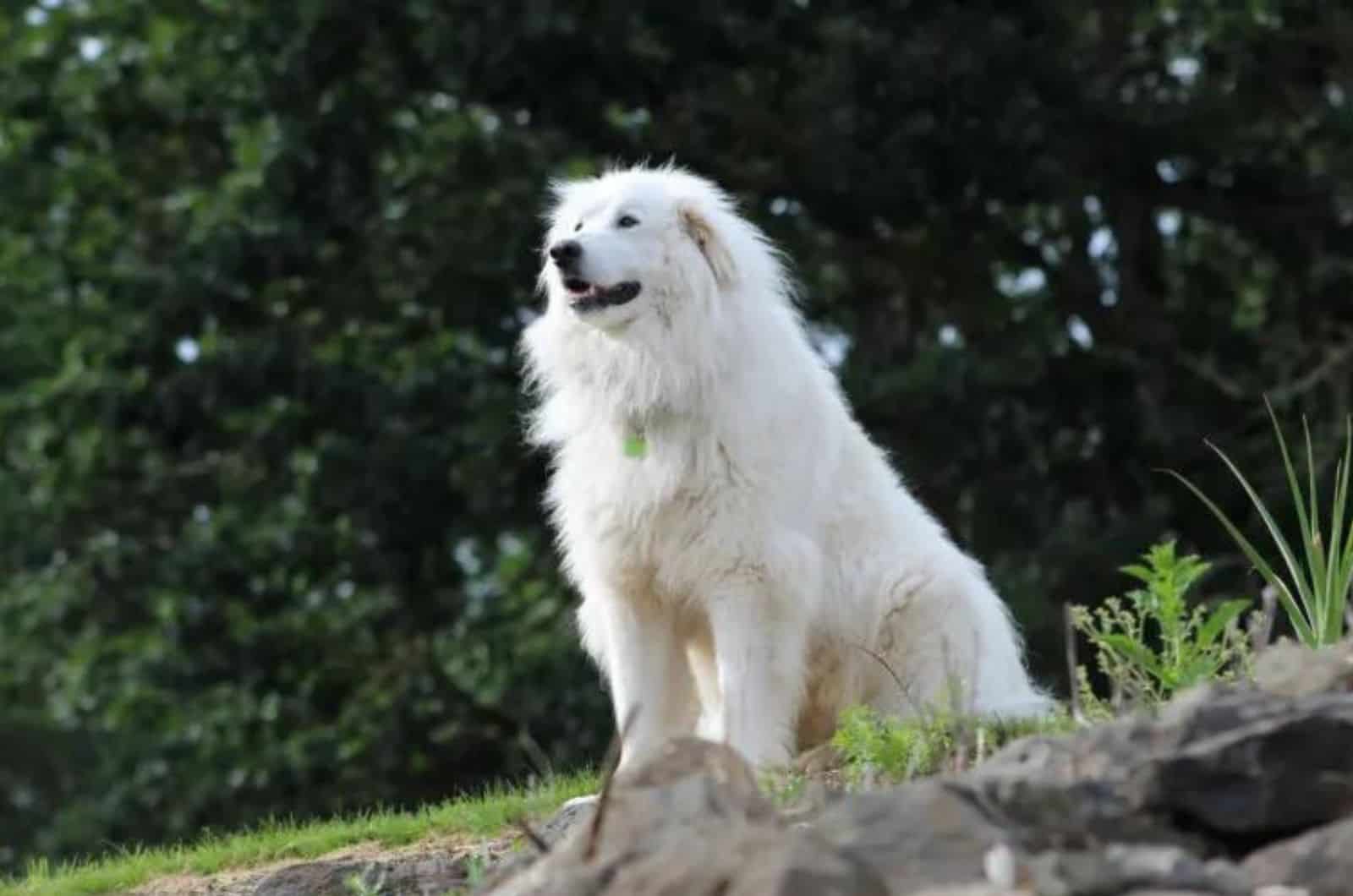
One of the most important traits that the owner of a Great Pyrenee should have is patience. Great Pyrenees dogs are often described as strong-willed and independent pups.
Therefore, they might not always be responsive during obedience training.
If your pet doesn’t follow basic commands, try to be patient instead of endlessly repeating them. Order your canine to do one thing, and wait in silence to see its response.
If you don’t give in immediately, your pup will eventually start fulfilling your orders as they’ll feel bored during the quiet times.
Repeat the order only when you see that its attention was distracted by something else or that the canine isn’t focused on you anymore.
9. Have Understanding For The Breed
As you can see, the bond that you create with your pup is the primary focus of any practice, including house, crate, obedience, or other types of training.
If your canine can’t trust you and feel comfortable around you, you can’t expect it to respect you either. This isn’t just the case with Pyrs, but it is the case with any other dog breed as well.
There are plenty of amazing step-by-step training books and guides on websites such as Amazon and Chewy, as well as in pet stores.
However, if you don’t learn more about this breed prior to training, and don’t find understanding for them and their behavior, no guide will be helpful enough to turn your strong-willed and independent Pyr into a family pet.
10. Get Ready For Challenges
If you have read all of the tips and tricks for successful Great Pyrenees training so far, it’s more than clear that you need to prepare yourself for the adventure just as much as your pet.
Beginnings are always the most difficult parts of the whole process, but with enough mental strength and knowledge, you’ll become an excellent trainer of your Pyr in no time.
A dog’s behavior changes as they grow older, so don’t be surprised if you think that you finally have everything under control, and then your pup suddenly stops applying everything it learned so far.
When you have a pup of two or three months of age, everything seems to be a lot easier than when you have a young adult of almost 100 pounds that you can’t contain.
Be prepared for this all the time, and never stop practicing with your pup.
Do Great Pyrenees Make Good Guard Dogs?
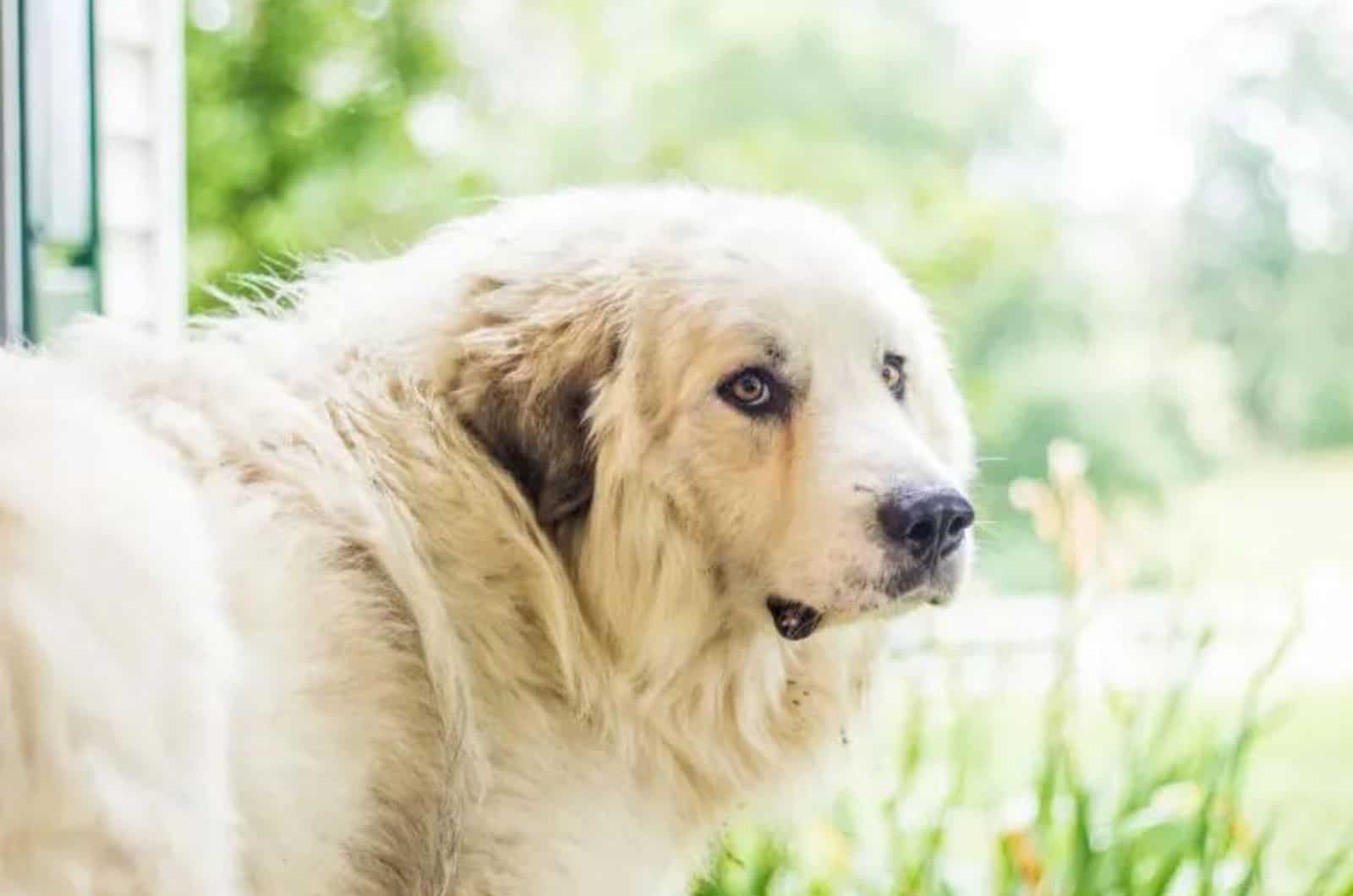
Great Pyrs are definitely one of the best guard canines you can find as they were created to protect livestock and members of their flocks from predators and any other kind of threat.
Of course, if they’re trained from early puppyhood, these dogs can become excellent watchdogs that will protect you and your family, as well as your property.
What Happens If Pyrs Aren’t Trained From An Early Age?
As I explained in the paragraphs above, Great Pyrenees are quite independent and stubborn canines that are used to leading others instead of being led.
If your pup isn’t trained from the first days of its life, it will disobey you as its owner whenever it gets a chance.
Your pup could easily begin herding you and the rest of your family as well. In some cases, they become overprotective of their “flock” (your family), resulting in aggression toward anyone who tries to get near you.
Therefore, training your dog as soon as possible is essential.
If you’re buying a pup from a Great Pyrenees breeder, make sure to get one from a responsible owner of an AKC-registered kennel or a rescue center that provides at least basic training programs for canines.
This way, you’ll ensure you and your family’s safety, but you will also ensure that you have a healthy and wonderful dog that you can continue working with.
For more information on the purchase of this large dog, read our article on Great Pyrenees cost.
Wrapping Up
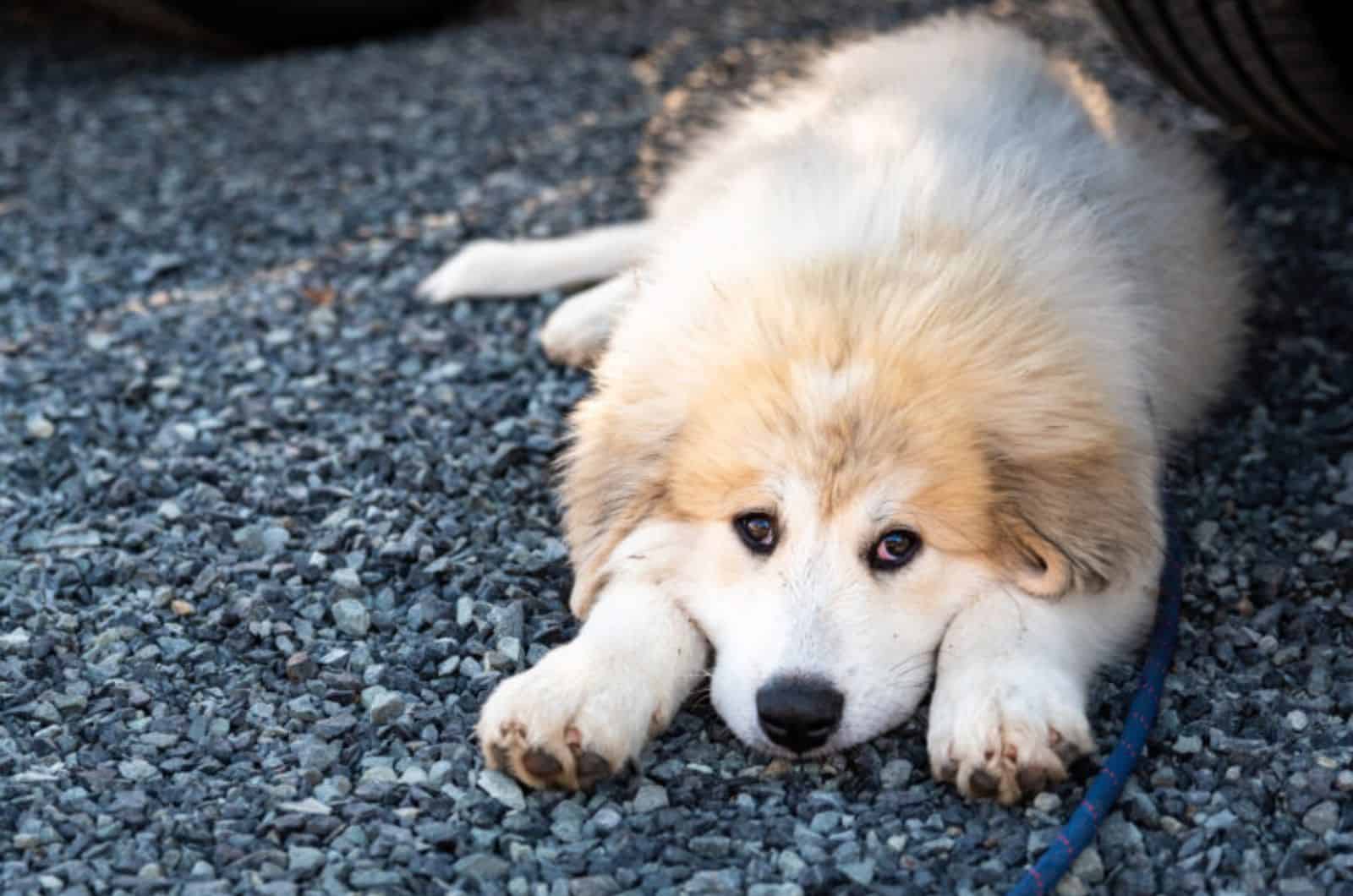
As you can see, Great Pyrenees training programs don’t just include sets of exercises and commands that your dog needs to learn.
Training consists of several vital methods such as positive reinforcement, relationship building, owner authority establishment, etc.
After this article, I’m sure you’ll all agree that training a Pyr doesn’t just mean training your pup, but also training yourself as a dog owner and testing your borders.
Remember, mutual respect can go a long way, and it can make the Great Pyrenees training sessions more successful than ever imagined!
READ NEXT:
Chihuahua Potty Training: Housebreaking Chis In A Few Short Steps
